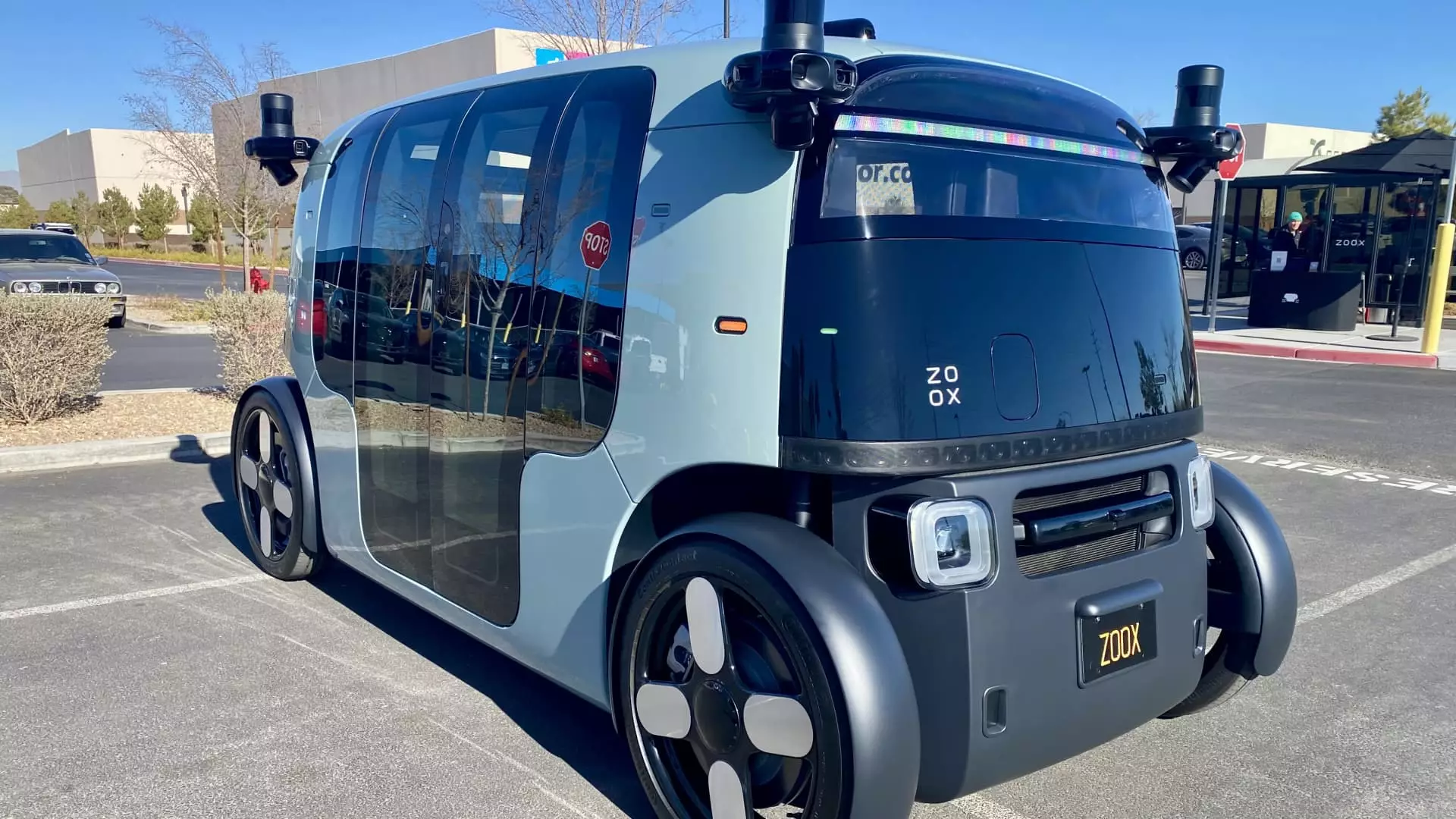The race toward a fully autonomous transportation system is escalating, with major players like Amazon’s Zoox aiming to transform urban mobility through innovative robotaxi services. As the industry faces uncertainty and fluctuating investor interest, Zoox’s ambitious plans signal a pivotal chapter in the autonomous vehicle saga.
Founded a decade ago and acquired by Amazon in 2020 for $1.3 billion, Zoox is venturing into uncharted territory within the autonomous vehicle sector. Its primary focus is on commercializing a ride-hailing service without the involvement of human drivers, aiming to pivot from traditional taxi models. The company has been aggressively testing its specially designed robotaxis, which notably lack human controls like steering wheels or pedals, in cities such as Las Vegas, San Francisco, and Foster City. This innovative design suggests a commitment to rethinking how urban transport can function without conventional operational frameworks.
Zoox is poised to launch its “Early Rider Program” in Las Vegas soon, anticipating that the city will become its first commercial hub. This initiative could invite the public to experience autonomous rides, which may help gauge interest and collect invaluable data as the company prepares to broaden its operations.
However, Zoox’s journey occurs amid a broader climate of uncertainty in the autonomous vehicle space. Established automakers like General Motors and Ford have retrenched from their ambitious self-driving aspirations, spurred by regulatory hurdles, safety concerns, and public skepticism. The struggles of GM’s Cruise, which recently curbed its operations after a notable accident, reflect the precarious position of innovators in this field.
Zoox’s strategy departs from other leading companies, such as Waymo, which have retrofitted traditional vehicles with autonomous capabilities. Instead, Zoox’s vehicles are purposefully designed from the ground up to operate without human input, offering a unique angle in the crowded robotaxi market. Critics, however, have likened these vehicles to “boxes” or “toasters,” questioning their aesthetic appeal as well as public receptivity.
Recent demonstrations of Zoox’s robotaxis, especially during a test drive around the Las Vegas Strip, reveal a technology that is steadily improving. While the vehicle navigated well and responded appropriately to traffic dynamics, instances of overly cautious decision-making cast a shadow over its performance. These moments highlighted the ongoing challenge of balancing assertiveness with caution in autonomous driving—a concern underscored by the harsh realities of human-driving behavior on the roads.
As Zoox seeks to raise the bar for the self-driving experience, it faces the daunting task of calibrating its vehicles to mimic the optimal human driving style without overstepping legal or safety boundaries. Striking that balance could be the key to not only enhancing user experience but also building public trust in autonomous technologies.
Looking ahead, Zoox’s ambitious expansion goals include plans to penetrate additional urban markets, such as Miami and Austin. However, the company’s timeline for these expansions remains ambiguous, revealing a cautious yet deliberate approach to growth. This strategy seems purposeful, considering the lessons learned from previous failures across the industry.
Not only is Zoox navigating a challenging regulatory environment, but it is also contending with the evolving business model of robotaxis. A sustainability plan that addresses profitability in this competitive field is paramount yet remains unclear. The historic struggles of companies like Tesla to roll out successful driverless operations illustrate the complexities involved.
As discussions surrounding the viability of a robotaxi service continue, industry commentators suggest that while Zoox’s technological advancements are promising, the critical question remains: How will they construct a viable operating model that can sustain long-term growth and profitability within the market?
In a landscape marked by both innovation and setbacks, Zoox exemplifies the hopeful yet precarious journey of autonomous vehicle development. If the company successfully commercializes its service this year, it could carve out a significant niche in the marketplace, potentially opening the floodgates for widespread acceptance of robotaxis across major cities.
While challenges surely lie ahead—regulatory issues, market competition, and cost management—Zoox’s ambitions reflect a broader desire to reshape urban transportation. The outcome, however, hinges on its ability to innovate, navigate obstacles, and reinvigorate interest in a category that has seen mixed results. As the world watches, the evolution of robotaxi services will undoubtedly reshape our approach to mobility for years to come.


Leave a Reply